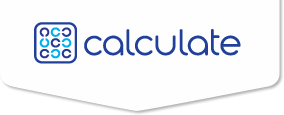Does your Higher Ed Website Work For or Against Enrollment? Three Tips to Assess its Recruitment Effectiveness

Websites have an enormous impact on students’ decision-making and are often under-utilized for their enrollment capabilities. We can assume students come to a website because they have a certain level of interest in the institution. What happens next definitely affects enrollment — and we know this because of what they themselves report:
- 80% of college-bound high school seniors cite a school’s website is the most influential resource in their college search
- Once there, they are looking for specific information — and they commit approximately 8 seconds to finding it
So how does your website stack up? Here are 3 elements to consider when assessing your site’s enrollment potential:
1. Strategy is the starting point, the intention behind the site. Was it developed to support the institution’s enrollment goals or is it a depository of institutional data?
Now, this is where it can get tough in a higher ed community: faculty may see the function of the website as one thing, administrators another, but it’s the prospective students who count most , particularly those “right-fit” students who you know will thrive. The site’s key function should be to connect, engage, and convert prospects into enrolled students.
But this doesn’t mean you are throwing out all the existing information. Designate internal vs external content and move the “inside the community” tasks and information to your intranet. This will lighten your site, ease navigation, and most importantly, reduce the clutter prospective students often refuse to wade through.
A sound website strategy puts the user first and works to deliver the content they deem essential. You do this by knowing your student audiences (undergrad, grad, adult, etc.) and anticipating their needs.
2. Navigation is critical to the user’s experience. I see a lot of college and university sites with messy, disordered, and even duplicate navigation. There should be a clear hierarchical order to the site’s structure and it should easily deliver the content users seek.
Start with what the research tells us. For example, the top 3 things traditional aged college-bound students look for in a website are:
- Academic programs/list of majors
- Cost/Scholarships
- Enrollment actions (apply, visit, connect with a counselor)
They expect to find these quickly. Do not, for example, bury your list of majors beneath several layers, requiring multiple clicks. To navigate with ease, the user should know exactly where they are in the site at any given point. Drop down menus, side navigation, and breadcrumbs provide visual clues that assist the user in finding data.
3. Content is indeed “king,” but why? The language used not only tells your institutional story and showcases its selling points, but it also effects SEO and relationship building.
First and foremost, your website text should be lean, active, and written to inspire interaction. Think compelling headlines, bulleted lists, strong Calls to Action (CTAs), and very short narratives. Again, put the user first and know your audience.
Students tell us their top concerns when assessing a college are value (“Is the debt worth it?”) and campus life (“Will I fit in?”). But they don’t want to hear it from you (the institution). For value, they want job placement and graduate school statistics; for campus life, they want to hear from their peers in the forms of authentic testimonials and photos.
Using the right language (SEO-friendly) will make or break you when it comes to search. The majority of students —89%— come to college websites through an online search. They tend to search via majors and geographic regions. Test it out: search for one of your school’s majors in your state and see if your institution comes up on the first page. If so, your SEO is working. If not, you are being eliminated from students’ lists.
If your site is successfully serving prospective students, remember that there’s something you need from them: their name and email address. CTAs and engagement forms should be strategically featured so you can capture basic information and move these prospects into your funnel for further recruitment.
Lastly, a closing thought on design: As important as it is, design should support your strategy and content, not dictate it. Like fashion, website design changes every few years. With a strong, enrollment-focused website, updating the look becomes a modest (rather than major) expense. A strong strategy, clear navigation, and compelling content will continue to serve your institution’s enrollment goals far into the future.

